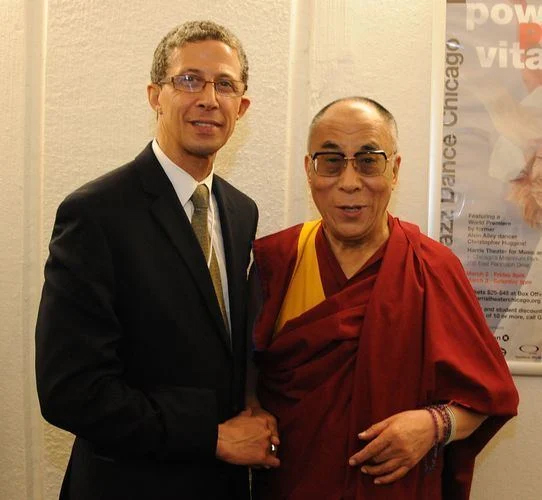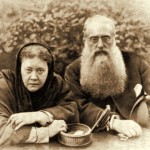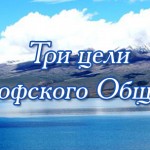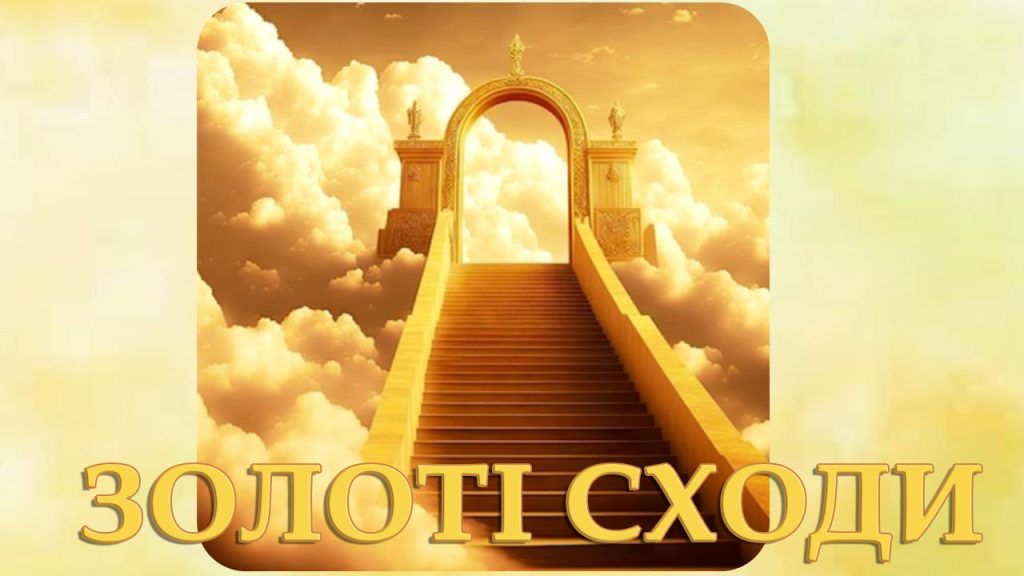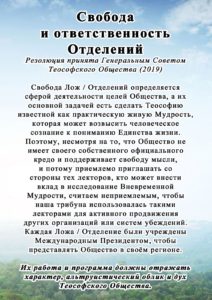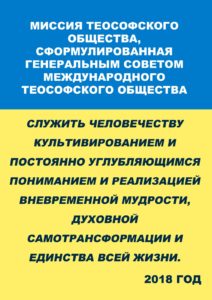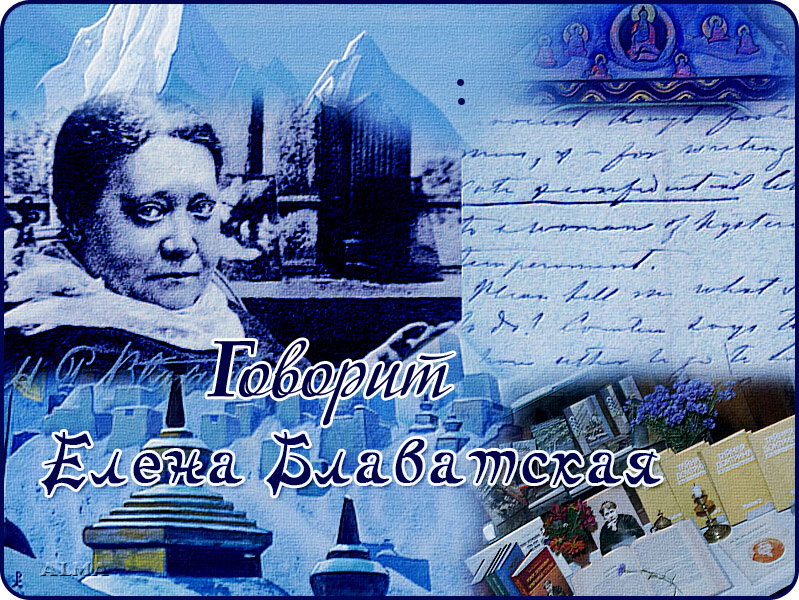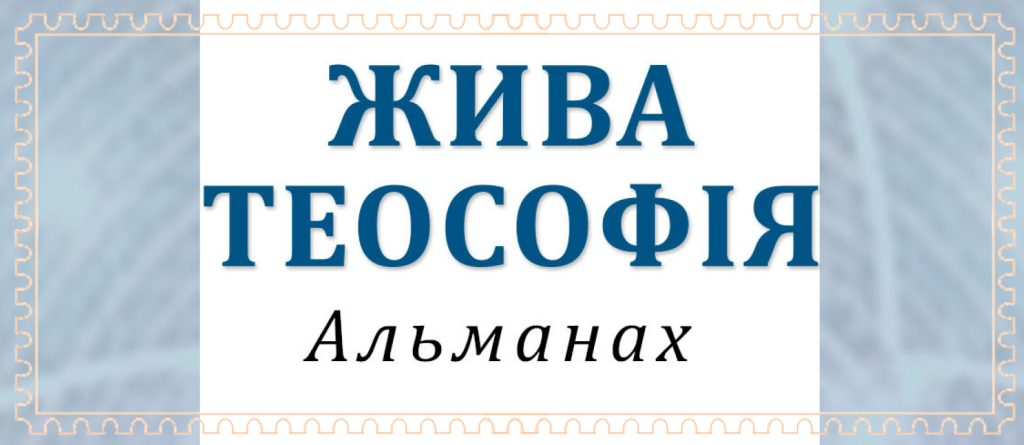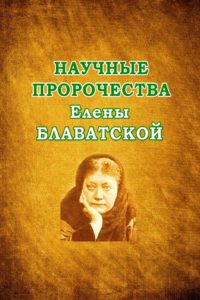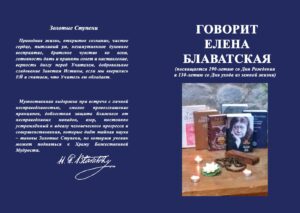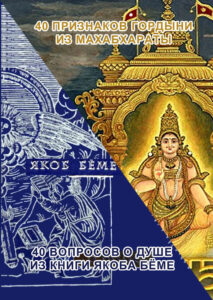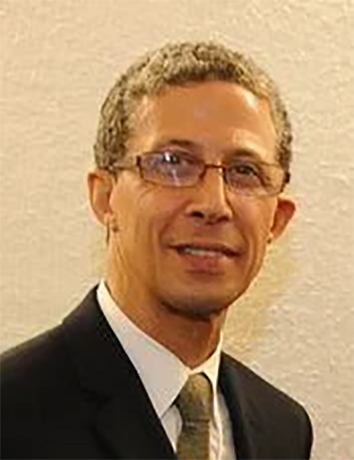
У Листах Махатм, коли йдеться про елементи, говориться, що насправді існує лише один елемент – дух/матерія, який поділяється на чотири або п’ять. Ці елементи описуються як одяг Божества. «Тоді цей елемент є … одним субстратом або постійною причиною всіх проявів у феноменальному всесвіті …. Стародавні говорять про п’ять пізнаваних елементів: ефір, повітря, вода, вогонь, земля. … Але ці п’ять — лише диференційовані аспекти Єдиного». (<theosophy.wiki/en/Elements>) Отже, наше розуміння та досвід елементів визначає наш досвід Божественного.
Більшість духовних традицій поділяють елементи на чотири або п’ять. У традиції, з якої походить теософський підхід, його зазвичай розглядають як п’ять елементів: землю, повітря, воду, вогонь і простір, який також називають акашею або ефіром. Ці елементи пронизують Всесвіт. Все, з чим ми стикаємося, і наше фізичне і психологічне здоров’я, залежить від того, як вони збалансовані всередині нас. Найважче для всіх нас це питання балансу. Святий Августин зауважив, що для більшості людей повне утримання легше, ніж ідеальний баланс.
Кілька років тому я хворів і не знав, що це таке. Лікарі, у яких я консультувався у США, не могли визначити причину. Звичайні підходи, такі як правильна дієта чи фізичні вправи, здавалося, не мали великого ефекту. Коли я був у Сінгапурі, я відвідав традиційного китайського лікаря. Його методика обстеження відрізнялася від західних лікарів. Не було ні стетоскопа, ні термометра, ні аналізів крові. Все було засновано на «імпульсах». Відповідно до імпульсів, які він виявляв, коли торкався різних місць на тілі, був поставлений діагноз, що моя система вийшла з рівноваги. У моєму організмі було занадто багато «охолодження», тому мені довелося триматися подалі від продуктів, які ще більше мене охолоджують, наприклад, солодких фруктів, охолоджених продуктів, листових овочів тощо. Він також дав мені якусь суміш трав, яку я повинен був заварювати і пити регулярно. Я мало знаю про систему чи методи, які лежать в основі його діагнозу, але знаю, що за дуже короткий час я вийшов з-під наслідків хвороби.
Які якості різних елементів? Земля: твердість, стабільність, центрованість — це стосується тіла, зокрема кісток, м’язів і фізичної структури. Вода, яка має властивості течії, легкості, руху, впливає на кров, лімфу, рідину тіла. Вогонь: творчий, пристрасний, трансформуючий. Нашим травленням керує вогонь. Потім є повітря: інтелект, рух і так далі. Нарешті простір, який не має меж, оточує і проникає в усе, говорить про відкритість і розширення.
Кожен з елементів цієї традиції також має свій колір. У тибетському буддизмі специфічні аспекти медитації стосуються елементів. Вони думають категоріями жовтого для землі, білого для води, червоного для вогню, зеленого для повітря, синього для ефіру, акаші або космосу. З точки зору духовного життя і його вимог вогонь вимагає особливої уваги. Для кожного, хто займається духовним шляхом або практикою, цей елемент є тим, з яким ми досить сильно взаємодіємо. Це символ трансформації.
Вогонь змінює речовини з одного стану в інший. При відсутності теплової якості вогню вода стає льодом. У присутності вогню лід стає водою. Якщо вона залишається у присутності вогню, вода перетворюється на пару, яка потім зливається в навколишній простір. Будь-що тверде при достатньому впливі вогню змінює твердість на попіл. І не тільки попіл, він також виділяє аромати, дим, тепло та світло. Він перетворюється. У духовних традиціях усього світу вогонь є центром у процесі самоперетворення. Потужність вогню така — він спалює все, що можна спалити, і змінює нечисте на чисте. У алхімічних термінах він змінює неблагородний свинець на золото.
У «Таємній Доктрині» О. П. Блаватської (ОПБ) виникає запитання: який погляд езотеричного вчення щодо вогню? Потім сказано: «Вогонь — це найдосконаліший і найчистіший відблиск … Єдиного Полум’я». Єдність завжди є центром, Єдиним Полум’ям, з якого все виходить. Далі ОПБ каже: «Вогонь … це життя і смерть, походження і кінець усіх матеріальних речей, божественна субстанція». Потім вона наводить такий приклад: «Придбайте шестипенсову лампу, заповнюйте її лише олією, і ви зможете запалювати від її полум’я лампи, свічки та вогні всієї земної кулі, не зменшуючи цього полум’я».
Часто люди говорять про когось із запальним характером. Гнів – це форма вогню, який горить на низькому рівні. Це виражається енергійно, але шкідливо. Оскільки це така потужна мотиваційна сила, часто роблять помилку, вважаючи, що енергія, яка виникає з гнівом, дає позитивні результати. Було сказано: «Говори, коли ти злий і ти вимовиш найкращу промову, про яку колись пошкодуєш». Хоча вогонь гніву спонукає нас діяти, він також затьмарює наше судження.
Більшість із нас знають тих, хто має властивість неконтрольованого характеру. Я знаю людей, які кажуть: «Я маю право на свій гнів». Звичайно, ми маємо, але ми так само несемо відповідальність за наслідки цього гніву. Це те, що згорає у стосунках. Жар гніву відганяє людей і стимулює реактивний гнів інших. На біологічному рівні це викликає спалювання всередині нас, наших органів і нервів.
Коли ми думаємо про паливо для вогню, який спонукає когось до духовного шляху, в алхімічній практиці вони думають про паливо як про бажання. Кажуть, що «за бажанням стоїть воля». Вогонь волі очищує низьке бажання в «прагнення». Бажання трансформується у вогненному котлі нашої власної свідомості. Прагнення веде нас у напрямку Нестаріючої Мудрості.
Я знав людей, які прийняли незліченну кількість різноманітних релігійних практик, духовних підходів, стосунків і професій, перш ніж досягти точки, де вони усвідомлюють роботу, яку вони повинні виконувати, спалювати шлаки, які затемнюють глибину, затемнюють завжди присутнє, єдине полум’я. Наша роль у цьому процесі полягає в тому, щоб співпрацювати, робити все можливе, щоб спочатку усвідомити, що всередині нас щось горить, що є сила, а потім наблизитися до неї.
Я пам’ятаю час, коли я вперше ознайомився з існуванням Теософії. Тоді я відчув, як щось пробудилося в мені. Хоча я не мав ні знання, ні мови, щоб висловити це, присутність цього вогню та ефект світла, яким він сяяв на те, що раніше було приховано всередині мене, стали яснішими. Також стала зрозумілою сила усвідомлення, яке супроводжувало це, і яке показувало, як проникати до головного. Мій розум і мій інтерес спалахнули. Моя проблема полягала в тому, що я не мав знань. Мені не вистачало жодної передісторії, як описати те, що було одягом цього тіла мудрості. У той момент я відчув, що воротами до нього є навчання. Мені потрібно було знати більше, знати хоч щось про особливості традиції Мудрості.
У той час я був у Нью-Йорку і зайшов до книжкового магазину Теософського товариства. Я не мав уявлення, що взяти з полиць. Я дивився на назви та гортав різні книги. Одна, яка мене вразила, це «Сила Думки» Анні Безант. Ще одна книга, яка мене вразила, — «Концентрація» Ернеста Вуда.
Була старша жінка, яка доглядала за книгарнею. Я сказав їй, що я новачок у всьому цьому і попросив її поради. Я показав їй книги, які вибрав, і вона сказала, що вони будуть хороші. Інша книга, яка мене привабила, була скороченням «Таємної Доктрини» О. П. Блаватської. У той час мені спало на думку щось про таємницю. Вона взяла цю книгу з моєї руки, поклала її назад на полицю і сказала: «Ні, я не думаю, що це зараз для вас». Я все одно купив. Пізніше, коли я спробував це прочитати, для мене це не мало сенсу. Вона була права.
Через два роки я дізнався, що цією ж жінкою була Дора Кунц, довічний член TТ, письменниця та всесвітньо відома ясновидиця, яка знала багатьох людей, чиї книжки я купував, і навчалася у них. Вона також заснувала і розробила метод лікування терапевтичним дотиком, який поширився по всьому світу. Саме вона порадила мені, що одні палива будуть кращими за інші для вогню, який палав у мені в той момент.
Є історія про чоловіка, який регулярно відвідував храм, але чомусь перестав приходити. Одного разу його гуру вирішив відвідати його вдома. Чоловік відчинив двері й запросив гуру зайти й сісти. Оскільки надворі було холодно, гуру сів біля вогнища, не кажучи ні слова. Через деякий час учитель взяв щипці, схопив вуглинку й поклав її на кам’яне вогнище поза багаттям. Вуглинка яскраво світилася, і вони сиділи разом, нічого не кажучи. Через деякий час він підвівся, щоб піти, але перед відходом вуглинка потемніла. Учитель підняв її і поклав назад у вогонь. Чоловік побачив, як потемнілий вуглик знову яскраво засвітився. Коли гуру йшов, господар дому сказав: “По-перше, цього тижня я знову побачу вас у храмі. Також я хотів би подякувати вам за ту полум’яну проповідь».
Ідея цієї історії полягає в тому, що коли ми починаємо усвідомлювати цей внутрішній вогонь, його потенціал і нашу потребу в ньому, наша відповідальність лежить на підтримці цього полум’я всередині нас самих. Один із способів, як ми це робимо, — це поставити себе в присутність того, що дасть життя цьому полум’ю. Для багатьох, принаймні на деякий час, вона зміцнюється в присутності інших, які щиро присвячують себе пошуку мудрості. Будь-яка діяльність, яка нагадує нам або наближає нас до джерела полум’я, живить нас.
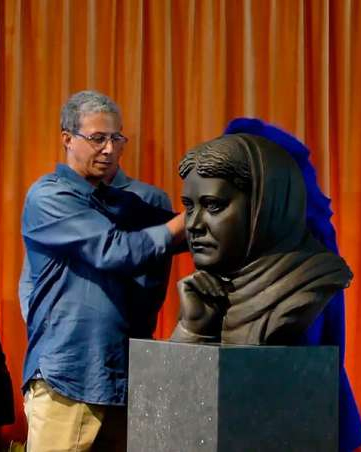 У ті часи, коли ми горимо, нам потрібно використовувати різні засоби, які є в нашому розпорядженні, щоб нагодувати полум’я — компанію інших, перебування в присутності духовного друга, вивчення думок тих великих людей, які були перед нами, тишу, яку ми відчуваємо в часи спокою, відновлення зв’язку зі світом природи. Ми несемо відповідальність за своє запалювання. Це в наших руках.
У ті часи, коли ми горимо, нам потрібно використовувати різні засоби, які є в нашому розпорядженні, щоб нагодувати полум’я — компанію інших, перебування в присутності духовного друга, вивчення думок тих великих людей, які були перед нами, тишу, яку ми відчуваємо в часи спокою, відновлення зв’язку зі світом природи. Ми несемо відповідальність за своє запалювання. Це в наших руках.
Коли всі зовнішні ознаки зникнуть … залишиться той єдиний принцип життя, який існує незалежно від усіх зовнішніх явищ. Це вогонь, який горить у вічному світлі, коли паливо вичерпано і полум’я згасло; бо цей вогонь не є ні в полум’ї, ні в паливі, і не всередині жодного з двох, а вгорі, внизу і всюди.
Листи Махатм, ML–127
Fire and the Matter of Balance
TIM BOYD
IN the Mahatma Letters, when speaking about the elements, it is said that there is really only one element, spirit/matter, which differentiates itself into four or five. These elements are described as the garment of the Deity. “This element then is the . . . one sub-stratum or permanent cause of all manifestations in the phenomenal universe . . . The ancients speak of the five cognizable elements of ether, air, water, fire, earth. . . . But these five are but the differentiated aspects of the one.” (<theosophy.wiki/en/Elements>) So our understanding and experience of the elements determine our experience of the Divine.
Most spiritual traditions divide the elements into four or five in number. In the tradition from which the theosophical approach derives, it tends to be thought of as five elements: earth, air, water, fire, and space, also called вkвєa or ether. These elements pervade the universe. Everything that we encounter, and our physical as well as psychological health, depend on how they are balanced within us. The most difficult thing for all of us is this matter of balance. St Augustine commented that for most people complete abstinence is easier than perfect balance.
A number of years ago I had an illness and did not know what it was. The doctors I consulted in the US could not identify a cause. Normal approaches like proper diet or exercise did not seem to have much effect. While I was in Singapore I went to see a traditional Chinese medical practitioner. His examination routine was different from Western doctors. There was no stethoscope, thermometer, or blood work. It was all based on “pulses”. According to the pulses he detected when he touched different places on the body, the diagnosis was that my system was out of balance. I had too much “cooling” in my system, so I had to stay away from foods that would cool me further, such as sweet fruits, refrigerated foods, leafy vegetables, and so on. He also gave me some combination of herbs that I was supposed to boil and drink regularly. I do not know much about the system or methods underlying his diagnosis, but I do know that in a very short time I came out from under the effects of the illness.
What are the qualities of the various elements? Earth: solidity, stability, centeredness — it relates to the body, particularly the bones, muscles, and physical structure. Water, which has the quality of flowing, ease, movement, affects the blood, the lymph, the fluids of the body. Fire: creative, passionate, transformative. Our digestion is ruled by fire. Then there is air: intellect, movement, and so forth. Finally space, which has no limits, surrounds and penetrates everything, and speaks of openness and expansion.
Each one of the elements in this tradition also has a color associated with it. In Tibetan Buddhism specific aspects of meditation relate to the elements. They think in terms of yellow for the earth, white for water, red for fire, green for air, blue for ether, вkвєa, or space. In terms of the spiritual life and its requirements fire demands special attention. For anyone who finds themselves engaged in a spiritual path or practice, that element is one with which we interact quite strongly. It is the symbol of transformation.
Fire changes substances from one condition or state to another. In the absence of the warming quality of fire water becomes ice. In the presence of fire ice becomes water. If it remains in the presence of fire the water turns into vapor, which then merges into the surrounding space. Anything solid when sufficiently exposed to fire changes from solidity to ash. And not just ash, but it also releases fragrance, smoke, heat, and light. It transforms. In spiritual traditions around the world fire is the focus in the process of self-transformation. The capacity of fire is this — it burns away everything that can be burnt, and changes the impure to the pure. In alchemical terms it changes the base metal lead to gold.
In H. P. Blavatsky’s (HPB) The Secret Doctrine the question arises: What is the view of the esoteric teaching regarding fire? Then it says that: “Fire is the most perfect and unadulterated reflection . . . of the One Flame.” Oneness is always the focus, the One Flame from which everything emanates. HPB goes on to say: “Fire . . . is life and death, the origin and ending of all material things, divine substance.” Then she gives this example: “Procure a sixpenny lamp, keep it only supplied with oil, and you will be able to light at its flame the lamps, candles, and fires of the whole globe without diminishing that flame.”
Often people speak of somebody having a fiery temper. Anger is a form of fire that burns at a low level. It expresses itself in energetic, but harmful ways. Because it is such a powerful motivating force, the mistake is often made of believing that the energy that arises with anger produces positive results. It has been said: “Speak when you are angry and you will make the greatest speech you will ever regret.” Though the fire of anger moves us to act, it also clouds our judgment.
Most of us have known those who have the quality of uncontrolled temper. I have known people who say: “I have a right to my anger.” Of course we do, but we equally have a responsibility to the consequences of that anger. It is something that burns away at relationships. The heat of anger drives people away, and stimulates the reactive anger of others. On a biological level it has the effect of burning away at us internally, at our organs and nerves.
When we think in terms of the fuel for the fire that drives someone toward a spiritual path, in the alchemical practice they think in terms of the fuel as being desire. It is said that “behind desire stands will”. The fire of will refines base desire into “aspiration”. Desire transforms in the fiery cauldron of our own consciousness. Aspiration drives us in the direction of the Ageless Wisdom.
I have known people who have adopted countless different religious practices, spiritual approaches, relationships, and jobs before arriving at the point where they recognize the work that they have to do, of burning away the dross that obscures the deeper, always present, one flame. Our role in this process is to cooperate, to do what we can to become aware, first, that there is something burning within us, that there is a power, and then to move closer to it.
I can remember the time when I first became acquainted with the existence of Theosophy. That was when I felt something awaken within me. Although I did not have the knowledge, or language to express it, the presence of this fire and the effects of the light it shone onto what was previously hidden inside of me became clearer. Also the power of the awareness that accompanied it, to burn through to essentials, became clear. My mind and my interest were sparked. My problem was that I had no knowledge. I was lacking any sort of background of how to describe what was the garment of this body of wisdom. At that point I felt that the gateway to it was study. I needed to know more, to know at least something about the features of the Wisdom tradition.
At that time I was in New York City and I went to the Theosophical Society’s bookstore. I had no idea what to pick up from the shelves. I looked at the titles and thumbed through the different books. One that jumped out at me was Annie Besant’s Thought Power. Another book that struck me was Ernest Wood’s Concentration.
There was an older lady who was tending to the bookstore. I told her I was new to all of this and asked for her advice. I showed her the books I had chosen, and she said they would be good. Another book I was drawn to was an abridgement of H. P. Blavatsky’s The Secret Doctrine. Something about secrecy appealed to my mind at that time. She took this book out of my hand, put it back on the shelf and said: “No, I don’t think that’s for you right now.” I bought it anyway. Later when I tried to read it, it made absolutely no sense to me. She was right.
Two years later I became aware that this same lady was Dora Kunz, a lifelong member of the TS, author, and worldrenowned clairvoyant who had known and studied with many of the people whose books I was purchasing. She had also founded and developed the Therapeutic Touch method of healing that has spread around the world. She was the one who advised me that some fuels would be better than others for the fire that was burning in me at that moment.
There is a story about a man who regularly attended a temple, but for some reason he stopped coming. One day his guru decided to visit him at his home. The man opened the door and invited the guru to come in and sit down. Because it was cold outside the guru sat down by the fire without saying a word. After a while the teacher took the tongs, grabbed an ember, and placed it on the stone hearth outside of the fire. The ember glowed brightly, and they sat together, saying nothing. After a while he got up to go, but before leaving the ember had become dark. The teacher picked it up and placed it back in the fire. The man saw the darkened ember now glow brightly once again. As the guru was leaving, the man of the house said: “First of all, I will be seeing you at the temple again this week. Also I would like to thank you for that fiery sermon.”
The idea of this story is that as we become aware of this internal fire, its potentials, and of our need for it, it is our responsibility to further that flame within ourselves. One of the ways that we do it is by placing ourselves in the presence of that which will give life to this flame. For many, at least for a time, it is strengthened in the presence of others who are earnestly applying themselves to the search for wisdom. Any activity that reminds us, or moves us closer to the source of the flame feeds us.
At those times when we are burning low we need to draw on the various means at our disposal to feed the flame — the company of others, placing ourselves in the presence of a spiritual friend, studying the thoughts of those great people who have come before us, the quiet that we experience in our times of stillness, reconnecting with the natural world. We are responsible for our own ignition. It is in our hands.
When all outward appearances are gone . . . there is left that one principle of life which exists independently of all external phenomena. It is the fire that burns in the eternal light, when the fuel is expended and the flame is extinguished; for that fire is neither in the flame nor in the fuel, nor yet inside either of the two but above beneath and everywhere.
The Mahatma Letters, ML–127
 Рубрики
Рубрики  Метки:
Метки: 